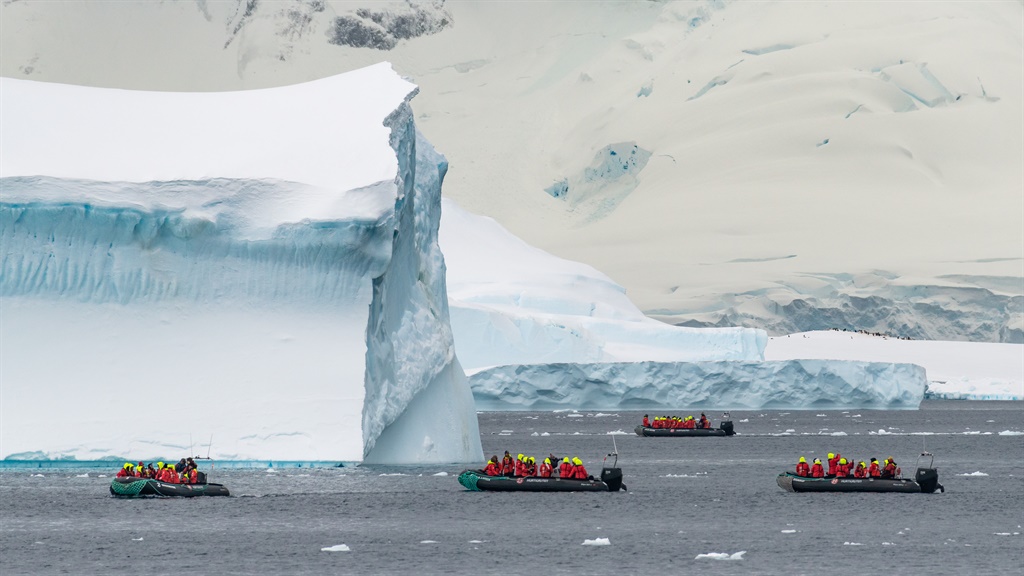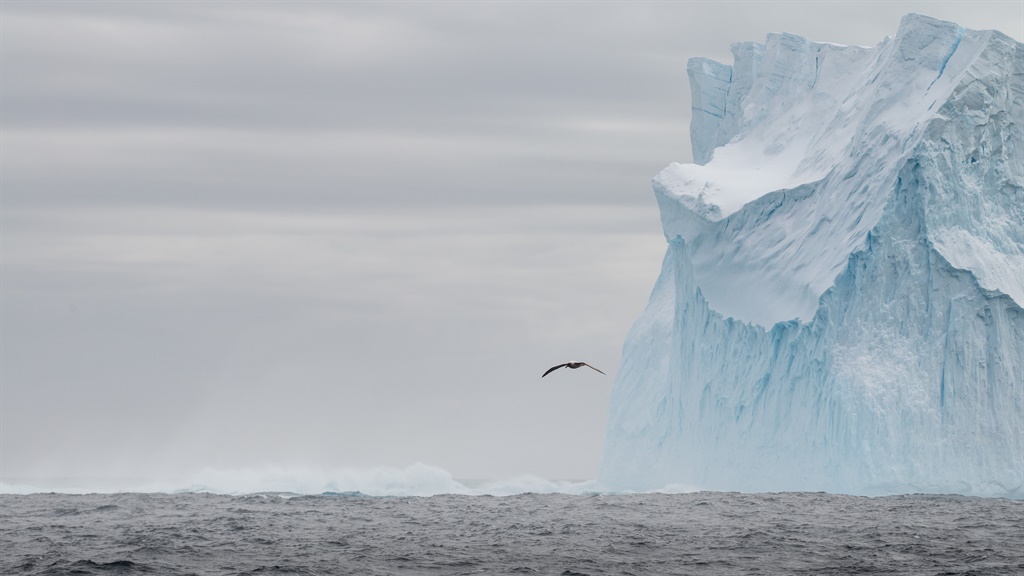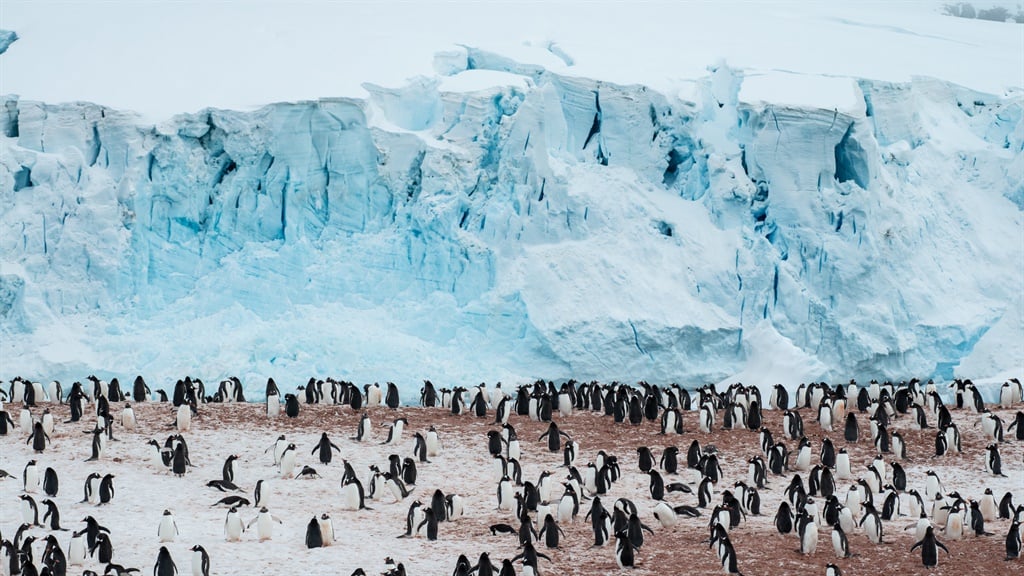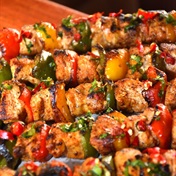Travelling to Antarctica is something you will save a lifetime for, but it’s also one of the rarest, most magical encounters you’ll ever have. Natalia Rosa experienced the cerulean glaciers and silent stretches of ice that few people ever see first-hand.
For French explorer Jean-Baptiste Charcot, journeying to the end of the world was more a case of “Why not?” than “Why?”
In fact, Charcot’s three-year stint exploring the western fringes of Antarctica at the turn of the 19th century left him so susceptible to the “charm” of its “empty and terrifying” landscapes, that he went back for round two just a few years later. This time, in a rather aptly named vessel, Pourquoi Pas? (in English, Why Not?)
This fine three-masted beauty may have escaped that particular journey a little bruised, but, having discovered over a thousand miles of new territory on the world’s most inhospitable continent, she justifiably earned the right to lend her name to an island, glacier and point – all of which remain today almost certainly exactly as they did over a century ago.
Sailing south on my vastly more comfortable voyage to Antarctica with the world leaders in exploration travel, Hurtigruten, I pondered why travellers would refuse their inner Charcot and decide not to go – it’s cold, it’s expensive, it’s far, what if I get seasick? But for every reason not to visit Antarctica, there are several for why you should; not least because this final frontier needs advocates to ensure it remains as it did in the time of Charcot – devoid of human interference and a paradise for the penguins, seals, whales, pelagic birds and lichen that thrive in its white wilderness.
I learnt a lot about the creatures that call the world’s driest, coldest continent home on my 12-day voyage. Most notably, I learnt that, unlike them, we didn’t belong.
As the MS Midnatsol surged through the whirling of the waves on the Drake Passage, I watched albatrosses and petrels effortlessly skim the waters in our wake.
We spent the better part of two days at sea preparing for what was to come, as on-board lectures by scientists introduced us to the geology, history and biology of the continent. We learnt how to leave no footprint, how the fickle weather conditions could change in a matter of minutes and to become stewards of this extraordinary place.
The bleakness of the Drake Shake, as the turbulent passage is sometimes called, gave way to excited shouts of “Iceberg!” on day two. In the midst of a grey Southern Ocean, a 50m high and 350m wide iceberg appeared. It looked like it shouldn’t be there, having floated around in all its beryl-blue beauty for decades, most certainly without melting.
One iceberg became many as we neared what looked like billowing white clouds on the horizon. It was impossible to know where land ended and the sky began. As Charcot himself had once explained, the clear air and colourless landscape make it difficult to gauge height and distance in Antarctica. The low puffy clouds emerged as smooth snow slopes, without an imperfection in sight.
Stationed on the open decks or in the comfort of the observation lounges, coffee shop and even the sauna, we spent the next week surveying the ethereal landscapes as we sailed through the South Shetland Islands, across the Bransfield Strait and through the Lemaire Channel, savouring their exquisite natural beauty. Fringed by snow-capped peaks plunging into polar waters, we sailed as far south as the puzzle of pack-ice would permit, watching seals sunning themselves on ice floes and rafts of penguins porpoising ever so delicately through the frigid water in search of the day’s catch.
Landing on Antarctica
Antarctica rewards flexibility and patience – opportunities to land on its islands, ice floes and the peninsula are dictated by wind and ice conditions, which change within minutes and several times a day.
Only 100 people are allowed to land at one time and are given, at most, an hour and a half to explore the snowy landscape, putting five metres between them and the closest penguin.
This land has been so untouched by humans, that these quirky little creatures have no reason to fear them and edge their way closer, curiously inspecting the out-of-place crimson-clad characters who briefly share their penguin highways.
These landings, as well as all the on-board lectures, meals, tea, coffee, water, and accommodation are included in the Hurtigruten sailing. Passengers are also provided with boots, walking poles and windbreakers.
In addition to the landings, passengers can pay for optional excursions such as kayaking, snowshoeing, photographic courses and camping overnight on land – the last being a rather expensive exercise, but, as bucket-list experiences go, worth every penny.
There is a well-equipped shop on board, selling everything from postcards to toothpaste. Aside from alcohol, two internet packages providing different download speeds can be purchased at the bar or in the restaurant, notably the best restaurant in the Antarctic, which serves mostly buffet meals inspired by Norwegian cuisine.
Charcot would undoubtedly have returned to the Antarctic a third time had his voyage been as comfortable as ours. For all of us on board the MS Midnatsol over 110 years on, the difference between the romantic accounts of these brave explorers and the reality of Antarctica couldn’t have been more different. The reality, in fact, is far, far better
- Hurtigruten is represented in South Africa by Development Promotions. Speak to any local travel agent about booking your own trip
- Rosa was hosted by Hurtigruten
QUICK FACTS
What will it cost?
A trip such as the one described in this article costs $7 764 (about R106 417) excluding flights between South Africa and Buenos Aires.
Where will you fly from?
The package starts and ends in Buenos Aires. You are flown via charter flight to Ushuaia where you embark on the ship. The charter is commissioned by Hurtigruten and is included in the package price.
What to wear?
Layers, layers and layers. You probably only need one to two sets of clothes to wear on land excursions. An inner thermal layer, a secondary woollen layer and an outer layer, followed by thin waterproofs. No need to buy or bring boots, just comfortable shoes for the ship, but you will need waterproof gloves, a beanie and sunscreen.
What if I get seasick?
The Drake Passage can be brutal but, at worst, you can expect two to three days of feeling unwell if you’re prone to seasickness. The ship sells tablets, which are better than the ones dispensed to me in South Africa. You can also wear acupuncture bands or patches, although these had limited success in my experience.
I have special dietary requirements.
Hurtigruten caters for every kind of dietary requirement. Food is labelled so that you can decide what you want to eat, and the variety is exceptional, bearing in mind where you are. Tell your travel agent about special requirements beforehand.
I have physical limitations
To join the cruise you must present a medical certificate. If you are unable to participate in any of the activities, you can still enjoy the views of nature from the comfort of the ship and attend the on-board lectures.
When’s the best time to go?
The season runs from November to March and there are different things to see throughout that time. While in early summer the landscape is snowy and the penguins are mating, later in the season you’ll see more land and be able to see penguin chicks. There’s no ‘best’ time to go.




 Publications
Publications
 Partners
Partners














